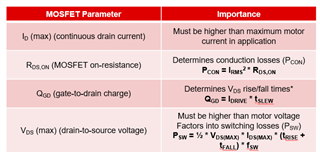Other Parts Discussed in Thread: CSD19536, CSD18511KTT, CSD19536KCS, CSD19536KTT
Hello,
I use an DRV8308 fo drive an BLDC with 18 Volt and approx 100 Ampere. WIth an IRFS7430 the MOSFET was so warm an a low duty of the PWM, taht the MOSFET explode. So I tried an CSD19536, which is much more faster. But with this, the driver DRV8308 burn.
If I use an CSD18511KTT, the MOSFET and driver work good but at 100 Ampere the MOSFET work unexpacted.
What could be the problem, that DRV8308 burn with CSD19536 but not with IRFS7430 or CSD18511?
Regards,
Peter



